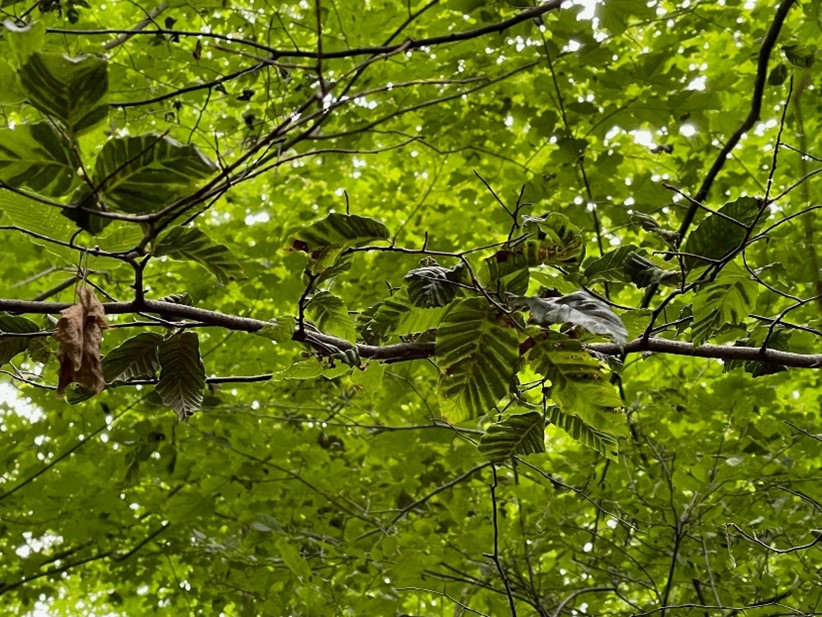Beech Leaf Disease is a harmful disease for beech trees caused by an invasive worm-like creature called a nematode. It lives inside the leaves and buds of infected beech trees.
This disease causes leaf loss, beginning with the lower branches and moving upward. Within a year, it kills the buds, which results in the death of the tree. Beech Leaf Disease can impact beech trees of all ages, from saplings to mature trees.
Beech Leaf Disease affects the beech tree family. All beech species, including native American beech, European beech, and Oriental beech are susceptible to the disease.
Beech Leaf Disease first emerged in North America in 2012, beginning in Ohio, and has since spread rapidly to other states and Ontario, including in London. While all species of beech trees are susceptible to Beech Leaf Disease, some beech trees can resist the disease.
Beech Leaf Disease in London
Beech Leaf Disease was found in London in the summer of 2023. In late summer 2023, the City hired a consultant to conduct a survey to look for beech leaf disease within the City’s trees.
The survey looked at individual beech trees along streets and in parks, plus grouping within the City’s wooded areas. Due to time limitations, the entire City was not surveyed. However, of the individually surveyed beech trees, 53% had beech leaf disease, and an additional 17% were suspected to have the disease. Within the wooded areas, 74% of the clusters of beech trees were found to have beech leaf disease. An additional 15% of the clusters were suspected to have the disease.
Signs and symptoms
Symptoms of the disease becomes obvious in summer (mid-June to September). The symptoms include:
- Dark-green stripes or bands between the veins of leaves.
- Thickened or leathery leaves that may be yellow, curled, or deformed
- Leaves may drop early, and buds may fail to develop.

Preventing Beech Leaf Disease
Since beech leaf disease has only recently been discovered, there is limited knowledge about it, including on its management.
There are no approved treatments for beech leaf disease at this time. As such, pesticides cannot be used to treat or prevent the disease.
How beech leaf disease is spread is still being studied, but in the meantime, the following general steps are recommended:
- Avoid moving firewood between different areas as it might transport infected wood to new locations.
- Isolate affected areas to prevent further spread of Beech Leaf Disease.
- Refrain from moving beech seedlings and/or leaf litter from infected areas.
Checking your trees for signs and symptoms is always recommended. While there is currently no treatment for beech leaf disease, symptomatic trees should also be monitored. The rate at which the disease progresses is not well-established, so the overall health of trees should be watched over time.
The Ministry of Natural Resources and Forests is studying Beech Leaf Disease in Ontario to isolate the nematode, understand how it is spread, find resistant trees, and create a management plan. The City of London is also supporting this work by surveying woodlands to understand the disease's impact and plan for its control.
